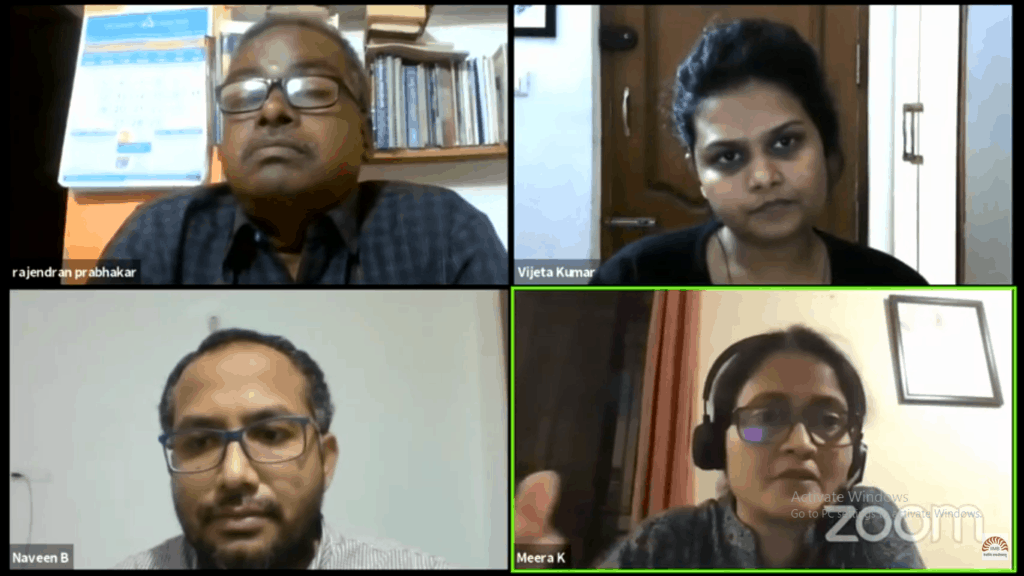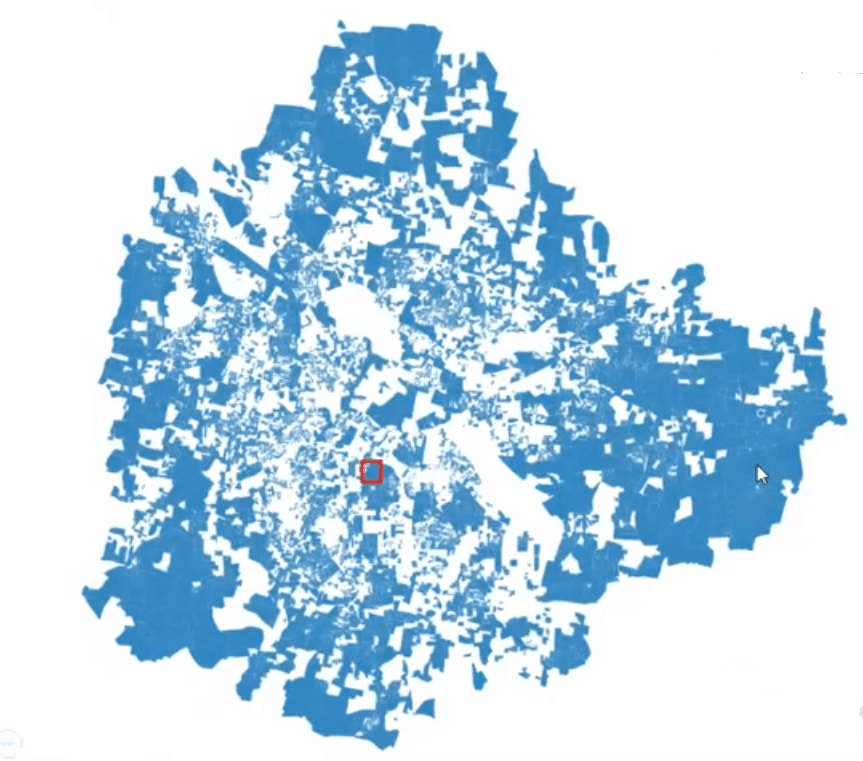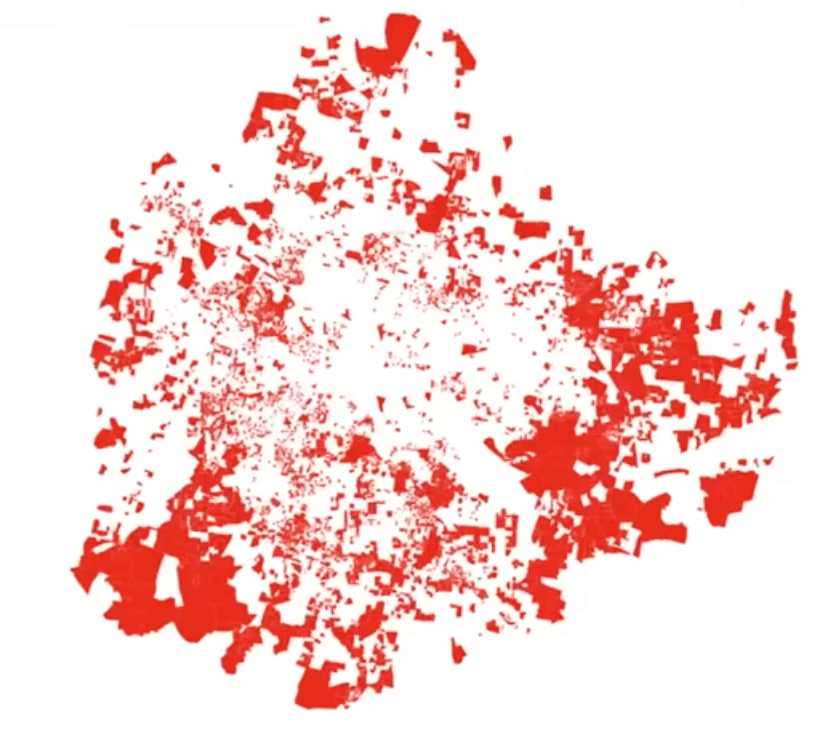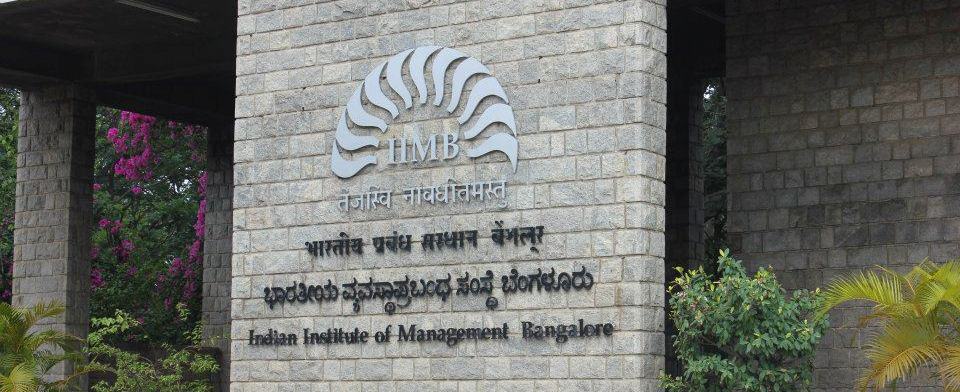Cities are often thought of as progressive spaces, antithetical to rigid hierarchical systems like caste. Babasaheb Ambedkar himself believed this to be true and advised Dalits to move to cities to escape casteism. Before him, Jyotirao Phule had echoed the same sentiment.
However, studies as well as lived experiences suggest that caste continues to shape urban spaces, albeit often invisibly. The same holds true for Bengaluru, even as it is often thought of as one of India’s most progressive cities.
How does caste continue to play an often invisible, yet important role in Bengaluru? How does it affect different spheres of life here – work, education, housing, planning, governance, politics?
Following is a Q&A based on edited transcripts from a recent panel discussion ‘Explaining caste discrimination in Bengaluru’, organised by Citizen Matters in collaboration with IIM Bangalore.

The panel:
- Cynthia Stephen: Dalit activist, social policy researcher and independent journalist.
- Rajendran Prabhakar: Activist working for urban-deprived and slum communities. Leads Marga, a community NGO.
- Vijeta Kumar: Teacher and writer. Teaches English at St Joseph’s college, Bengaluru.
- Naveen Bharathi: Social science researcher, currently post-doctoral fellow at the Centre for the Advanced Study of India in the University of Pennsylvania.
Is caste alive in cities like Bengaluru?
Deepak Malghan, IIMB: In the 2015 census by Karnataka government, it was found that only 4% of all the married couples in Bengaluru had married outside of their respective castes while a little over 4% of the marriages were inter-religious. This means, till this day, about 92% of Bengaluru’s population marry not only within their religion but also within their respective castes. What does that tell you about the presence of caste?
How does caste find its way in the hustle-bustle of cities?
Caste is a system deeply entrenched in the very structure of our society. The panelists discussed some ‘modern’ institutions that often get away as they are perceived as ‘not influenced by caste’.
1) Housing
Rajendran Prabhakar: Caste operates in governance in terms of how much priority is given to the issues of people living in slums. As per government statistics, 35% of Bengaluru’s population live in 2% of the total landmass, that is, slums. Seventy to ninety per cent (varying from slum to slum) of these people are SC, ST or converted minorities. The very existence of slums is a clear indication of caste in urban areas.
Naveen Bharathi: It is important to study segregation in urban areas. Which neighborhood you come from, becomes a marker of your identity. This is how segregation works in the city-space. It divorces one section of the population from the other, in the sense that one section wouldn’t know how the other section lives, what do their daily lives look like.
We took data from 1,235 cities which account for about 70% of India’s urban population. For our study, we digitised block-level maps. This was because, unlike segregation in America, here the same ward may have both privileged castes and Dalits, but with no interaction, as Dalits are pushed into a certain area of the ward. So on a map, even in the absence of concrete walls, the communities are segregated.


2) Governance
Rajendran: There is an unspoken of unanimity both within the political class as well as the governance class that the underprivileged and segregated settlements are to be left for decades to be in the same situation. Anandpuram slum in Mysore road has existed for 100 years, and now they are facing the threat of eviction.
Also, what are the employment opportunities for slum dwellers? It’s all low-paying, menial jobs – in hotels, as street vendors, as car drivers. And what amazed me is that just one dominant caste group handles the entire sweeping contracts in BBMP area.
The city is planned in a way that enables extraction of labour from particular caste groups with as low wages as possible. Even the Slum Board develops 15ft x 20ft houses for slum-dwellers. Most houses built under these projects are low-quality, with minimal access to basic amenities. What drives this is the belief about who ‘deserves’ better living conditions.
3) Representation in politics
Rajendran: In the urban space, caste also demeans the citizenship of Dalits who live in segregated urban settlements. They do not have equal citizenship. In Southborough Commission in 1919, Babasaheb Ambedkar had raised three issues – that of citizenship, representation and access to resources. And the same three points, even after 101 years, still stand unresolved. Because of the experiences that they have as Dalits or depressed classes, they do not even fathom that representation can bring about changes.
Naveen: Also, terms like ‘vote-bank politics’ are derogatorily used for the oppressed communities whereas the dominant castes vote along caste lines too. Even Brahmins vote along caste lines. Basavangudi is a prominent example for that.
4) Jobs and academics
Cynthia Stephen: The job market is where Dalits are competing on an equal footing with privileged classes. And it is then that you are excluded without you even knowing it. Even with me, it was the rejection for jobs I was overqualified for, that sent me on a journey of unearthing the history of my ancestry.
Deepak Malghan: About 95% faculty at IIMs and IITs are drawn from just 5% of the sections among India’s very diverse society.

Vijeta Kumar: I teach a paper on resisting caste and it’s in the process of teaching this paper that I’ve realised how difficult it is to make people understand how caste exists outside as well as inside the classroom. They reject it, they refuse to accept it. As a student of a prestigious higher education institution like IIT or IIM, things hit you only when said in a certain language, the academic language.
Caste system is something they have learnt about only in their social sciences textbooks, where the only thing they learn about Babasaheb is that he was born on 14th April or that he was the father of the Constitution. The fact that he wrote a research paper at the age of 18 is unknown to them.
To make students understand that lived experiences are as enriching as your dead Savarna language, has been a struggle for me. These ‘academic’ discourses are somehow considered more important than lived experiences.
Cynthia: Whenever you talk about caste, the issue of reservation comes up. But the people who drop out of school are mostly Dalits and Adivasis. Meritocracy is basically the entitlement that people from privileged backgrounds claim. And it has clear caste and class entitlement. This is a democracy; everyone has a fundamental right to education.
Even with the provision of affirmative action in our Constitution, qualified people from SC and ST communities are kept from filling the vacancies. It’s not that there are not enough qualified people or that people from these communities do not have merit. That’s a myth that has been systematically constructed.
Vinay Kumar, guest panelist: My earliest recollection of an experience of caste discrmination was in the sphere of Carnatic music, which is dominated by the upper castes. I was the first person in my family who tried to learn Carnatic music. Later, I overheard one of my teachers saying that to learn Carnatic music, you should come from a certain pedigree or it should be in your DNA. And this teacher told my mother that I was not ‘destined’ to learn music and that I’m incapable.
How does the Savarna Gaze play a role in today’s world?
Cynthia: People from the dominant castes, some of them very prominent personalities, have been asking what the Hathras case has to with caste, that it could’ve happened to any woman. And we’re tired of this question.
Now this question can come from two different places. One is coming from a place of ignorance; that they just don’t understand how caste is involved in such cases. But the other is a rhetorical question to tire you out. It’s part of this whole superstructure of caste.
Rajendran : The privileged castes just don’t want to discuss these issues. Raising the issue of caste itself is regarded as casteist. This is a cultural pathology. The institution of modernity has not informed them about this medieval segregation of society, including in cities.
Caste is often spoken of as if it’s interchangeable with race. Is that perception correct?
Deepak: Frankly, the caste problem in India is very different from the race problem in America. What we have is what can be best described as the Great Indian Apartheid.
We ought to be speaking about exclusion rather than inclusion. We don’t quite have the American minority inclusion problem. Rather we have the South African majority exclusion problem. That is, dominant castes do not make up the majority of the population in our country, yet the systems have helped them exclude the majority — the non-dominant castes.
What can dominant castes do to make things better? How do they start becoming conscious of the ‘Other’?
Vijeta: I think to learn about the ‘Other’, first we have to learn about the ‘Self’. Fran Lebowitz, when asked about race, had said – don’t worry about what it’s to be black in America, ask yourself what it is to be white in America. And I would say the same about caste in this country. Begin with yourself – how did you get where you are right now.
And I also think, we have to start begin structurally, like at school. Obviously students learn caste at home, but it comes full-circle at schools – who are you having lunch with in school, why is your school keeping students from bringing eggs or non-veg in your lunch boxes?
Cynthia: I think a solution is also to turn to the Constitution. The Constitution of India is an admirable document which has all the right values for modern, forward-looking ethos. Talk about equality, and practise it.
If there are people who are struggling to get basic constitutional entitlements, support them. Why do the Dalits and Adivasis only have to fight their own battles? It’s your fight as well because you’re a citizen of the country, and it is also about you if your country is not abiding by the Constitution.
Watch the full panel discussion:
Further Readings:
The Caste is Alive and Kicking
Manaswini Bhalla’s paper on role of caste in IT industry
Neighbourhood-scale Residential Segregation in Indian Metros
History of Reservation in India from the 1800s to 1950s
[Siddhant Kalra contributed to this article.]
After indipendance our aim was to provide education, employment,health, and shelter. In most of these fields caste is dominated.Those upper castes having good qualifications not getting jobs are migrating to other countries. Government jobs have 60% reserved.
If we analyse the route cuase is caste system in Hindus.Downtrodden are converted to either christianity or to islam also finding problems of Servival.
Most marriage are made within castes and further driving caste system solid. Lot of Caste based pradhikaras made by government supporting caste. Economical inbalance along with caste driving our country to a state of vote bank to politics.
After 70 years later we have to see where we are.Our village system mostly remaining where it is. Modern development failed due to lack of vision and too much corrupt politics. We have to send our town planning along with ministers to check development with a plan of vision mission. If we fail one more generation it may take and blame our selves
When a Dalit can vote for their particular caste and these panel members are of the opinion that Brahmins shouldn’t vote for their caste. What type of hypocrisy is this? I am lol reading this article
[Note: This comment has been edited as per our Comments Policy – Ed]
Urban cities are slightly better, but discrimination is subtle in work places. Need to educate youngsters to fight for their rights rather than be shy when faced with discriminating situations.
Most of the people belonging to lower castes are afraid to tell their original castes because they will be isolated and don’t get rented home’s good area’s. Even the people moved government jobs or financially strong are not openly tell their caste.it only come up to avail government facilities evn the people living besides home most possibly not shared the original castes.
I agree with Deepak Malghan, the caste system is is alive and the discrimination is alive in Bangalore City, I like to Narrate by experience which happened during my childhood days when I was in 5th Std one group of Devanga Community had arranged a annual Devi procession in the Heart of city in Sampangiramanagara located just behind the BBMP head office, one of my friend called me to join for a rehersal training to attend a marching behind Devi procession, during rehearsals one of the trainer asked my caste and kept me out of rehersal training, I wondered at that age because I didn’t knew my caste background, only I knew to say my caste when some application that were to be filled during that time, it was an horrific experience when I was excluded from the children group of same age, same education and of same economic background.
True. D hypocrisy of these panelists is clearly visible. Every university hs a ST/SC cell. So many sc st students groups spreading hatred n enimity against other OBC n general category students. Lets visit once d GKVK UAS Bengaluru u vl see it